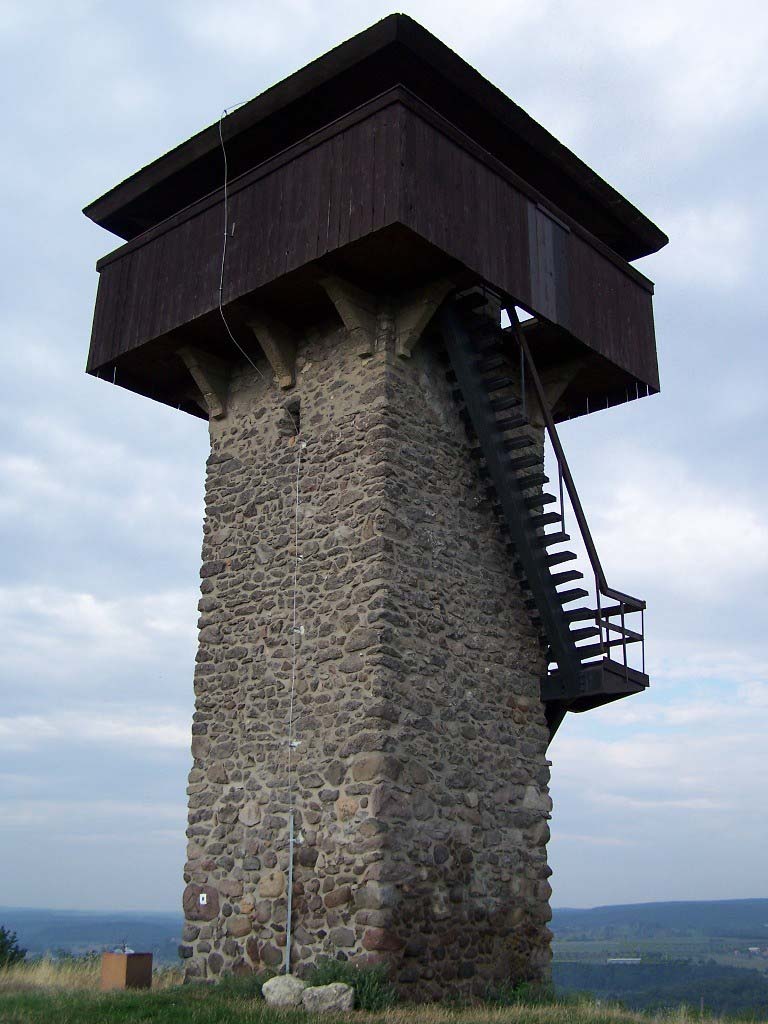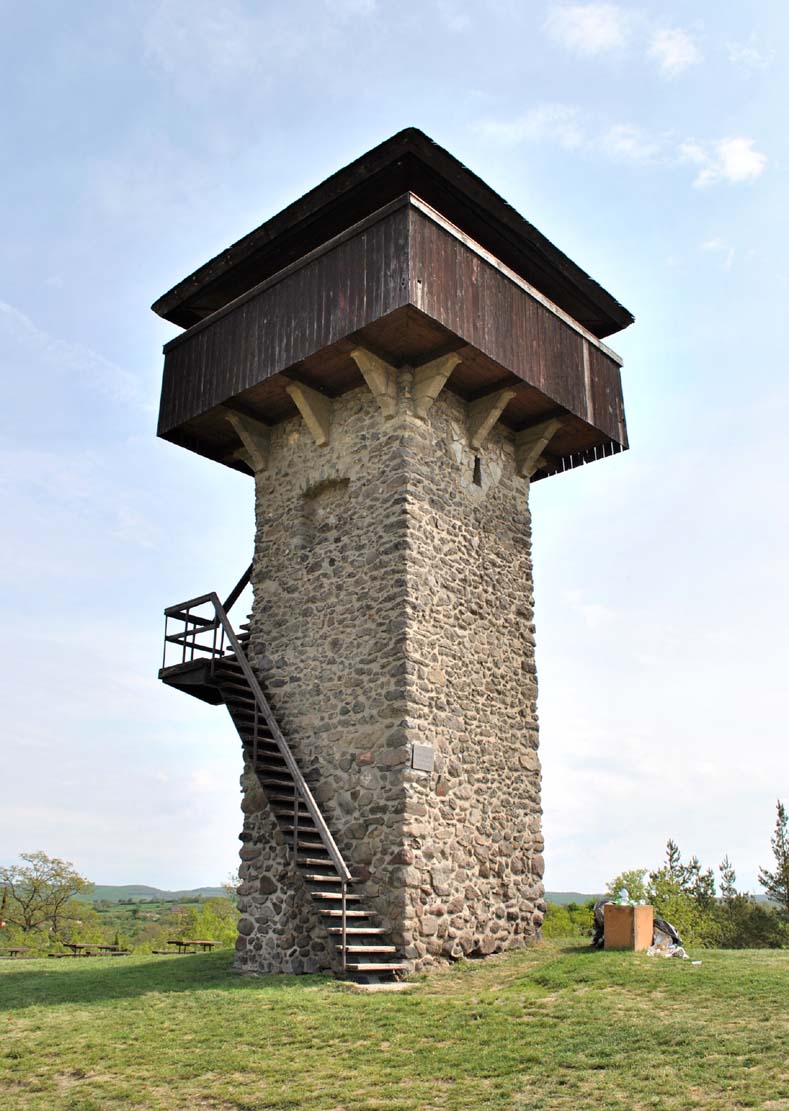History
The watchtower was built in the third quarter of the 16th century as part of a signaling and warning system to protect Krupina against Turkish raids. The first attack was recorded in 1546, and already in the second half of the 16th century the town was still under strong military pressure from the Muslims. In 1566 the Turks captured 44 townspeople and killed two persons. In 1570, they murdered another 27 inhabitants, and in 1573 the town repelled an attack of 300 Turks. The invasion of a 1,500-strong Turkish unit in 1578 was supposed to destroy the suburbs and capture many inhabitants, but the town remained unconquered.
The military tactics of the Turks and the terrain predisposing to ambushes and secret raids by fast troops, necessitated an efficient response and, at the same time, the creation of a system of buildings that would provide the ability to transmit visual information in the uneven, hilly area. Construction work on the watchtowers started after the capitulation of Hont and Nógrád in 1554. The tower over the Krupina was already recorded at the war council of 1564, but due to the heavy financial burden on towns and communes, the construction of other watchtowers continued throughout the second half of the 16th century. The remaining signal posts were located, among others, at Čabrad Castle, Sitno, Zvolen (two towers), Banská Bystrica (three towers), the village of Ľubietová and Drieňov. The watchtower in Krupina was guarded by a crew of 20 soldiers and two messengers. Each town resident was obliged to pay 2 zlotys per year for their maintenance.
In the 17th century, the Vartovka tower above Krupina informed about the movements of insurgent and imperial troops during numerous anti-Habsburg uprisings. In 1663 it was captured by the Turks, but in 1685 it was recaptured by the troops of Charles of Lorraine. The Turkish threat in Krupina ended in the 1680s. The tower was used until the early 18th century and then abandoned. In the 1960s, renovation of the historic building began.
Architecture
The tower was built on the headland of the high Strázavar Hill, on the eastern side of the town. Thanks to this location, it had an excellent view of the surrounding areas, especially the Krupinica river valley. It was founded on a quadrilateral plan measuring 3 x 3.1 meters, with walls 12 meters high. Observation was facilitated by a timber gallery running around the top floor, mounted on massive stone corbels. The entrance to the tower was located in the upper part and was originally accessible by a wooden ladder. In addition, the only openings were narrow slits illuminating the penultimate floor and a window in the western wall. The interior was divided into three floors separated by wooden ceilings. The lower, unlit ground floor probably served as a warehouse, while the guard was, of course, on the top floor. The tower was topped with a hip, shingled roof.
Current state
Among the several watchtowers from the turn of the Middle Ages and the Renaissance that still exist in Slovakia, the Vartovka Tower is the only one in its stone part that has been completely preserved in original condition. In recent years its wooden porch was reconstructed and the monument was made available to visitors. Unfortunately, the appearance of the tower is spoiled by the ahistorical modern stairs that wrap around the external facades.
bibliografia:
Hanuliak V., K problematike počiatkov města Krupiny, „Archæologia historica”, 20/1995.
Hanuliak V., Zvolenská protiturecká obranná línia, „Archæologia historica”, 30/2005.
Wasielewski A., Zamki i zamczyska Słowacji, Białystok 2008.


